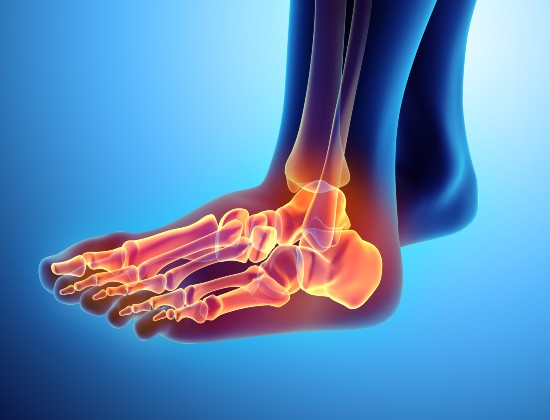Sesamoiditis
A sesamoid is a bone that is inside a tendon. The two oval shaped bones under the big toe joint (medial and lateral sesamoids) lie within the tendons that move the big toe, helping it to bend or straighten, and take a great deal of force during walking or sporting activities. Sesamoiditis is when the bones become inflamed, even when there is little arthritis around the joint.
What causes problems with the sesamoids?
- Athletes can injure or fracture the sesamoids. This is often referred to as a turf toe injury, where the toe frequently bends backwards
- Wear and tear around the big toe can cause big toe arthritis and pain around the sesamoid bones
If the symptoms are associated with a recent injury, seeing a specialist early on can make the condition more treatable. Longer term pain is also unlikely to improve without medical treatment.
What are the symptoms?
The main symptom is pain, which sometimes comes and goes, under the big toe joint. Over time it may become more persistent, preventing you from carrying on with sporting activities.
Can the problem become worse?
If the symptoms are associated with an injury, it’s a good idea to seek medical advice as soon as possible to make sure you make a full recovery. If you have long term pain in the toe it’s likely that it will continue to be painful without some form of treatment.
How is it diagnosed?
A medical examination and discussion of your symptoms may help rule out other causes of pain and an X-ray can identify whether the bone is positioned incorrectly or fractured. You may also be offered an MRI or CT scan.
How is it treated?
If the pain is due to injury, you may be offered treatment for turf toe.
For more chronic (long term) pain:
- Off-loading the toe: the foot can be off-loaded with a boot or special insole to allow any inflammation to settle
- Activity modification: modify your exercise schedule to allow the sesamoids to recover while preventing stiffening of the toe joint. Once the pain has settled, you should be able to gradually return to sporting activities, but avoid doing anything that makes the pain worse
- Anti-inflammatory medications: take these as advised by your doctor
- Physiotherapy or ultrasound therapy can help in some cases
- Surgery: most people don’t need to have surgery. However, if the condition does not improve following a rehabilitation plan, the fracture may need to be repaired with a bone graft and a tiny screw to fix the bones, or removal of the sesamoid bone which can give good relief of symptoms, allowing you to return to your previous sporting activities
Important: This information is only a guideline to help you understand your treatment and what to expect. Everyone is different and your rehabilitation may be quicker or slower than other people’s. Please contact us for advice if you’re worried about any aspect of your health or recovery.


